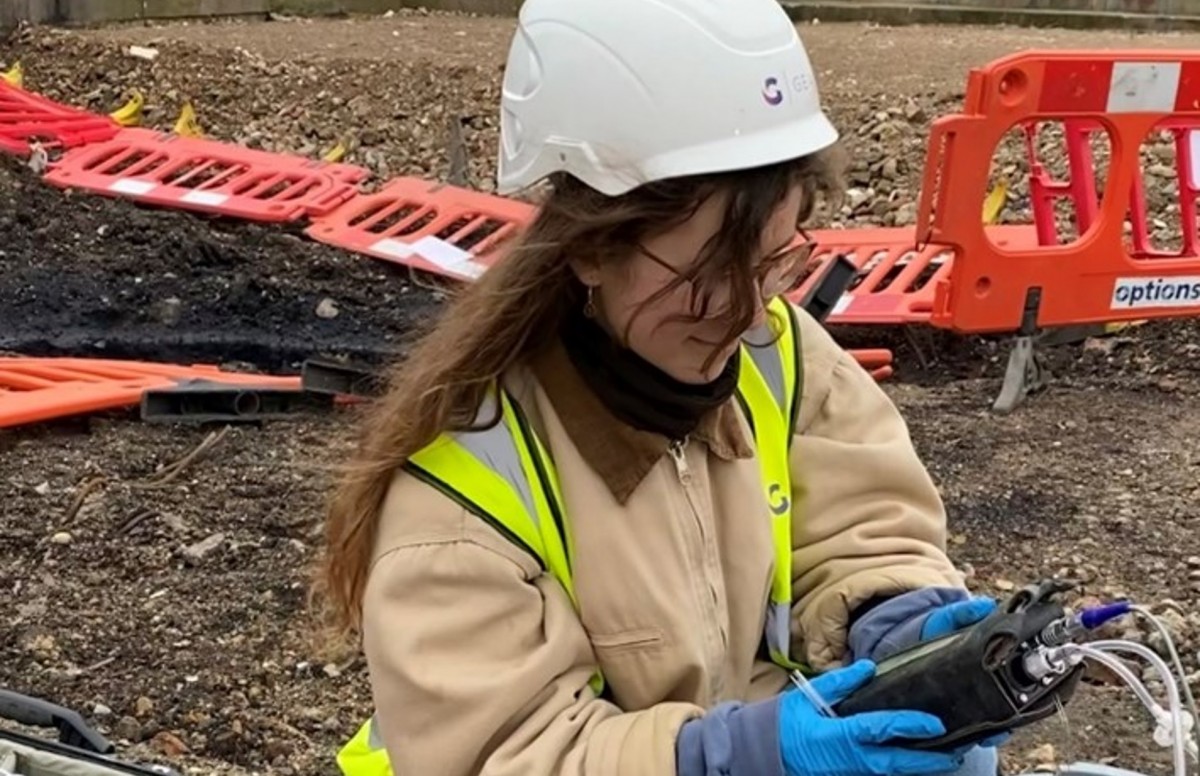Not known Factual Statements About Geotheta
Not known Factual Statements About Geotheta
Blog Article
4 Simple Techniques For Geotheta
Table of ContentsGeotheta - An OverviewSome Known Questions About Geotheta.Facts About Geotheta RevealedThe smart Trick of Geotheta That Nobody is Talking AboutThe Greatest Guide To Geotheta

They conduct website investigations, gather examples, perform laboratory examinations, and evaluate information to review the suitability of the ground for construction tasks - Geo Tech Engineering. Based on their searchings for, geotechnical designers offer referrals for structure style, slope security, maintaining frameworks, and mitigation of geotechnical threats. They work together with other professionals, such as architects, structural designers, and building teams, to ensure that geotechnical considerations are incorporated right into the general project style and implementation
By evaluating the behavior and residential or commercial properties of dirt and rock, they can determine potential geotechnical hazards such as landslides, soil settlement, or incline instability. Their knowledge assists protect against failings or mishaps that can threaten lives and home. Right here are some in-depth tasks and duties of a geotechnical designer: Site Investigation: Geotechnical engineers conduct site investigations to collect data on subsurface problems.
They translate the data to comprehend the residential properties and actions of the soil and rock, including their stamina, leaks in the structure, compaction attributes, and groundwater problems. Geotechnical Analysis and Design: Geotechnical engineers examine the data collected throughout site examinations to assess the stability and suitability of the site for construction jobs. They do geotechnical calculations and modeling to evaluate variables such as birthing capability, settlement, slope security, lateral earth pressures, and groundwater flow.
The Ultimate Guide To Geotheta
Structure Style: Geotechnical designers play an essential function in designing foundations that can securely sustain the designated structure. They evaluate the soil problems and tons requirements to establish the suitable structure type, such as superficial foundations (e.g., grounds), deep foundations (e.g (https://soundcloud.com/geotheta)., piles), or specialized techniques like soil improvement. They consider variables such as negotiation limits, birthing capacity, and soil-structure communication to create optimum foundation designs
They review building plans, display site tasks, and carry out area evaluations to verify that the layout recommendations are complied with. If unexpected geotechnical concerns arise, they examine the situation and provide suggestions for remediation or modifications to the style. Risk Analysis and Mitigation: Geotechnical engineers assess geotechnical threats and dangers connected with the task website, such as landslides, liquefaction, or soil disintegration.

Cooperation and Interaction: Geotechnical engineers function carefully with other professionals associated with a job, such as engineers, structural designers, and building and construction groups. Effective communication and collaboration are vital to incorporate geotechnical considerations right into the general project design and building and construction process. Geotechnical designers offer technical knowledge, solution queries, and make certain that geotechnical demands are fulfilled.
The 10-Minute Rule for Geotheta
Below are some kinds of geotechnical designers: Structure Designer: Foundation engineers focus on making and evaluating structures for structures. They assess the soil problems, load requirements, and site features to determine one of the most ideal structure kind and design, such as superficial structures, deep structures, or specialized strategies like heap foundations.
They review the elements influencing slope security, such as dirt buildings, groundwater problems, and slope geometry, and develop techniques to stop incline failures and mitigate risks. Quake Designer: Quake designers concentrate on analyzing and designing frameworks to withstand seismic forces. They assess the seismic hazard of a website, evaluate dirt liquefaction possibility, and establish seismic layout standards to ensure the security and durability of frameworks during earthquakes.
They execute area testing, collect samples, and assess the accumulated data to characterize the soil buildings, geologic formations, and groundwater conditions at a website. Geotechnical Instrumentation Designer: Geotechnical instrumentation engineers concentrate on tracking and measuring the habits of soil, rock, and frameworks. They set up and preserve instrumentation systems that keep track of factors such as dirt settlement, groundwater degrees, slope motions, and architectural displacements to examine efficiency and give very early warnings of potential problems.
The Main Principles Of Geotheta
They perform tests such as triaxial examinations, debt consolidation tests, straight shear tests, and leaks in the structure tests to gather information for geotechnical analysis and layout. Geosynthetics Designer: Geosynthetics engineers focus on the layout and application of geosynthetic materials, such as geotextiles, geogrids, and geomembranes. They use these products to boost soil stability, enhance slopes, give drain remedies, and control disintegration.
They often tend to be investigative individuals, which implies they're intellectual, introspective, and investigative. They are interested, systematic, sensible, logical, and logical. Some of them are additionally social, meaning they're kind, generous, participating, person, caring, useful, compassionate, sensible, and pleasant - Consulting Engineer.
In the office atmosphere, geotechnical engineers utilize specialized software program devices to execute calculations, create layouts, and analyze information. They prepare records, review task requirements, interact with clients and staff member, and coordinate job tasks. The workplace setting offers a conducive setting for research, analysis, and collaboration with various other specialists entailed in the task.
The 7-Second Trick For Geotheta
They frequently go to job sites to perform website investigations, examine geotechnical problems, and collect data for analysis. These gos to entail taking a trip to various places, in some cases in remote or image source difficult surfaces. Geotechnical engineers may execute dirt tasting, conduct tests, and screen construction activities to make certain that the geotechnical aspects of the job are being implemented properly.
Geotechnical designers also operate in specialized geotechnical research laboratories. In these centers, they carry out experiments, do examinations on soil and rock samples, and analyze the design properties of the products. Geotechnical research laboratory engineers work thoroughly in these environments, taking care of testing tools, running instruments, and tape-recording data. They work together with various other laboratory staff to guarantee exact and trustworthy screening outcomes.
Report this page